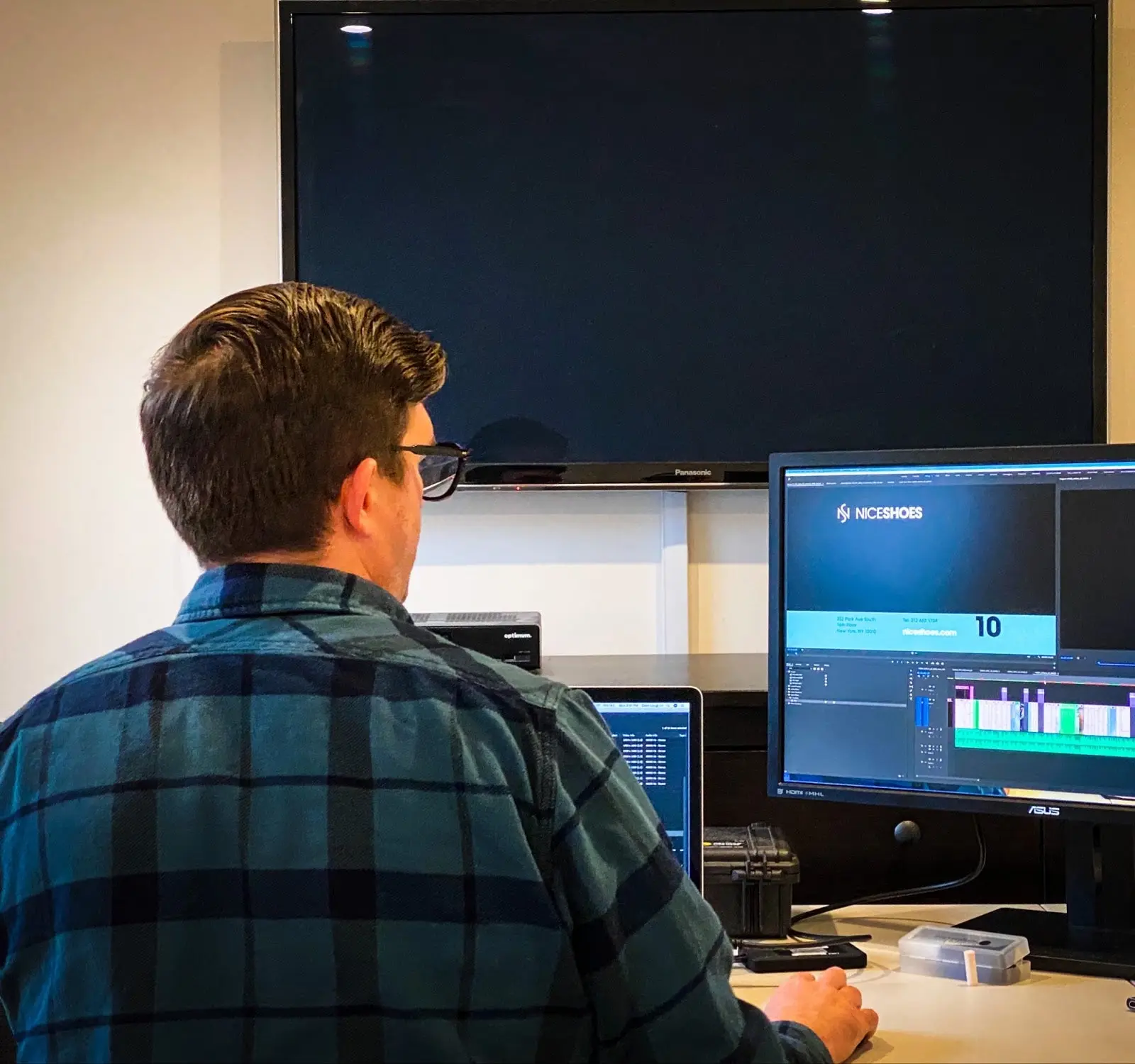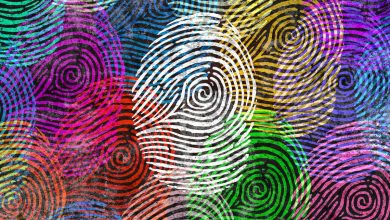Big name creative production studio embraces remote editing

Learn how creative video agency, Nice Shoes, leveraged the power of Adobe Creative Cloud to embrace remote video editing in the wake of the pandemic.
A still from a video, produced and edited by Nice Shoes.
When you operate like Colin Loughlin and Tara Holmes, “Nice Shoes” is more than just a compliment. For them, it’s the creative studio they proudly call home, with a talented team of editors, colorists, and VFX artists that has been helping big brands produce lasting and immersive experiences since the late 90s. More than 25 years in the industry have taught Nice Shoes how to solve complex problems creatively and efficiently — a skill that has been especially useful over the past year as they and their colleagues have, literally, all headed home.
We sat down with Loughlin, the studio’s senior creative editor, and Holmes, its executive producer, to learn about how Nice Shoes and its team have transitioned to a fully remote, or WEmote, workflow, and the Adobe tools that have helped them do it in wake of the COVID-19 pandemic.
Contents
Adjusting to the new normal: The shelter-in-place edit suite and the importance of cloud storage
We met with Loughlin and Holmes in the usual way, via Zoom call — and one of the first things we all noticed was the bright sunlight streaming in through Loughlin’s window. While important for a video conference, light is an unusual thing to see in a video editor’s office. This, it turns out, is a major difference in working in the office and at home. “I hate to say it, but editors are built for sitting in rooms for hours at a time, you just put me in a different room. At least I get a window, but the blackout blind isn’t black enough.”
Bringing aspects of the editing suite into the home (and adjusting the home to those aspects) is just one of the major ways that the Nice Shoes team has had to adapt. “The company has been doing remote for years on the color side of things,” Holmes said. “We developed our own workflows for that which aided in the transition of moving our entire studio of artists to work remotely and securely connecting them to our servers.”
Nice Shoes’ Colin Loughlin and his WFH edit suite.
While the work itself has not changed, there is still a difference between working with someone in the other room and someone in a different state. Loughlin made it clear that the transition would not have been nearly as successful if it weren’t for Nice Shoes’ IT team. “One of the biggest things is being able to connect to our server,” he said. “If we have a project with two editors and two assistants and we all need to share the same media, the last thing you want to do is have four people working locally off drives.” Whether it was going into the office to plug in drives, making sure all the software worked together, or troubleshooting at home set-ups, the Nice Shoes IT team handled it.
Working ‘WEmotely’
Once the servers were connected, the software was sorted out, and the client sessions were set up, there was still the question of how to work together as a team. Loughlin told me that it all came down to communication. “That’s the main thing when you’re doing an edit,” he said, “and, working from home, you miss the back and forth with the creatives. Sitting there in a room talking and bouncing ideas back and forth.”
Like many other teams, Nice Shoes has turned to Slack, Zoom, and other software to help them communicate with each other. Using these tools helped the workflow feel a bit more natural. Sure, the team had swapped jeans for sweatpants and office mates for house pets, but the work was more or less the same. Loughlin told us, “As long as they’re seeing the same media I’m seeing, it really doesn’t matter where we are.”
Using the right tools makes all the difference
In order to create the powerful visual experiences they are known for, Nice Shoes’ team needs to use interoperable software that can handle the load. This is where Adobe Creative Cloud comes into play.
The Nice Shoes team relies heavily upon Adobe After Effects and Adobe Premiere Pro to get their work done quickly and efficiently. As Loughlin reiterated, time is the most limited resource on any creative team. “That’s the most valuable thing in some of these projects,” he said, “when you’re up against a deadline or you got to make a show, you don’t really have time to [troubleshoot] unless you don’t want to see your family ever again.”
When working from home, troubleshooting can become a nightmare that affects more than just your work. It becomes even more important to have an editing software that can work seamlessly with comping software and not have any issues. By reducing the need for rendering, and outputting, creative teams save valuable time during the editing process.
Having the bridge between Premiere Pro and After Effects also helps Loughlin maintain a visual understanding of the work he’s doing. “I like to look at my timeline and know where everything is and see where I’m stacking stuff,” he told me, “Then I dynamic link it for my After Effects artists. That way, while the After Effects team is working, I can still go down my timeline and maybe even trim shots or move stuff around without having to wait for them.”
Loughlin’s edit team is doing a lot of their own sound design as well. In the wake of the pandemic, many people are shooting with lean crews; the Nice Shoes team is getting footage that doesn’t have any audio. Sound is a vital ingredient for selling edits, so Loughlin’s team has taken matters into their own hands and started to do their own sound design. “Whenever I jump into any of the features in Premiere Pro, I have my workspace for using all the audio tools in there. I just love the functionality of it.”
In addition to Premiere Pro and After Effects, Loughlin folds Adobe Audition into his workflow in order to get as close as possible to a really good rough cut without needing to have a huge server at home. He said, “I have a snowball right here. My wife is in the industry as well, and can chime in with voice overs if needed. I can do a rough color design. I can do a rough sound design, and I don’t need a huge beefed-up computer to do that.”
Collaboration and trust are what matters most
As a creative production studio, it takes more than just being able to support a remote team for Nice Shoes to be successful. The most important aspects to making this work, according to Loughlin and Holmes, have been collaboration and trust. Creative teams always need to be sure they understand what the ask is, which means they have to listen, communicate, and make sure they are scheduling supervised sessions. Organization has never been more significant.
“I think the most important thing during this pandemic is to make sure that everyone is on the same page,” Loughlin said, “Everyone needs to feel that they’re being heard and that they trust the work that you can do.”
Source : Adobe









